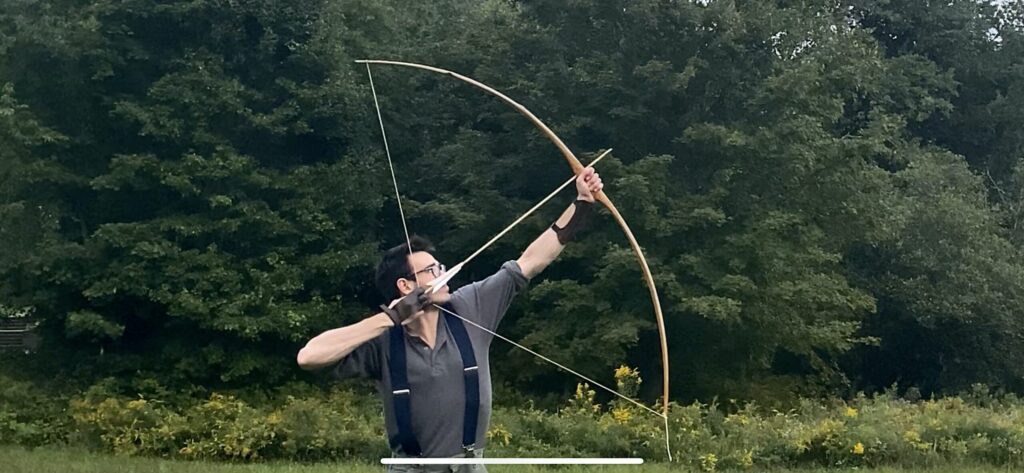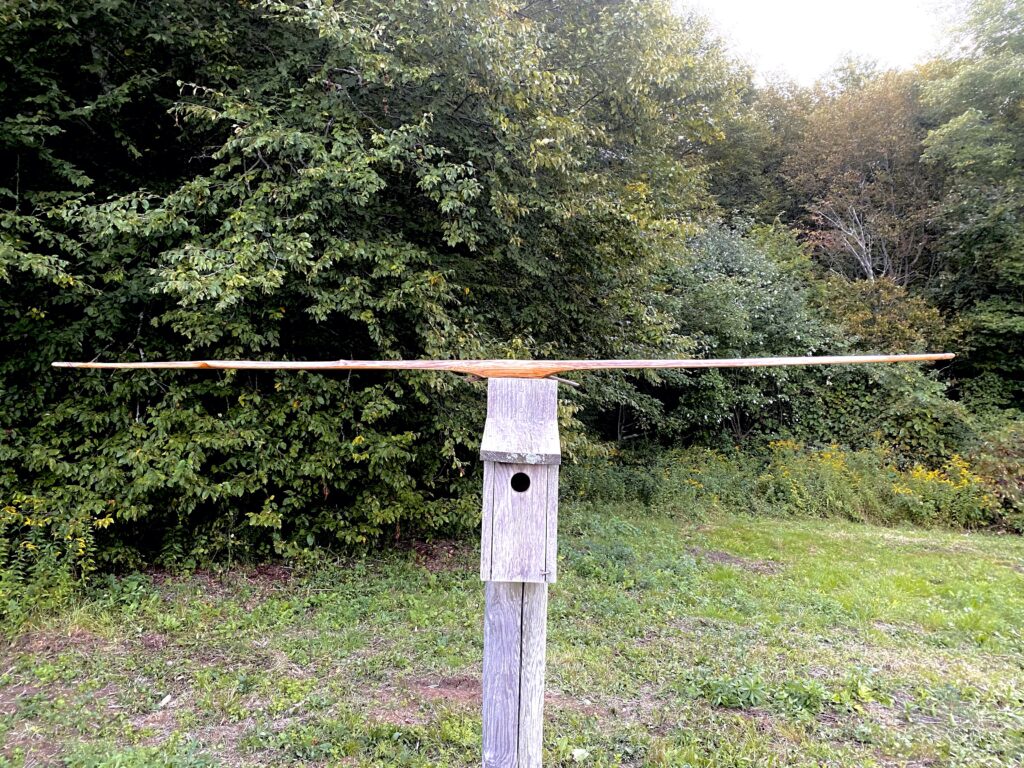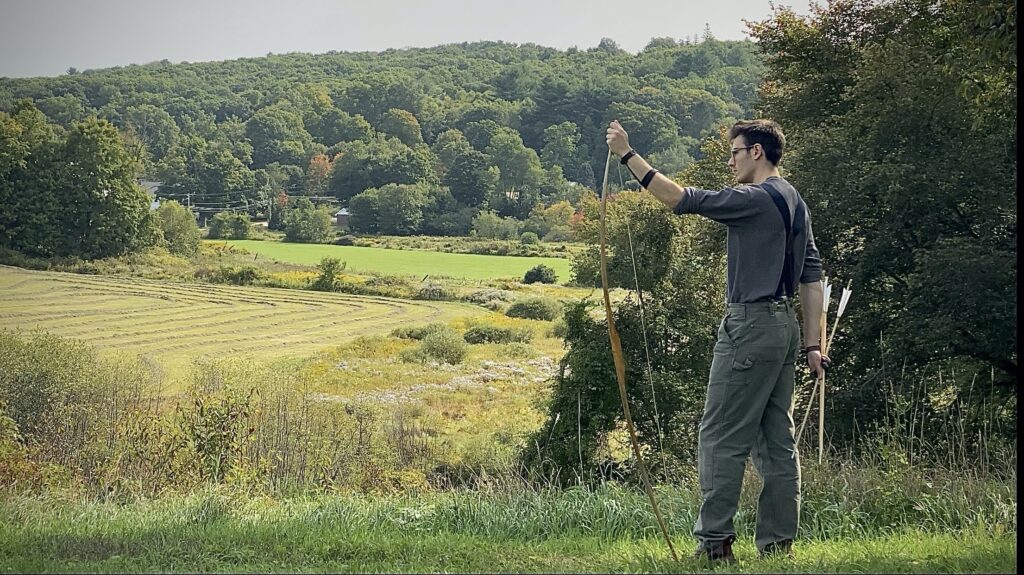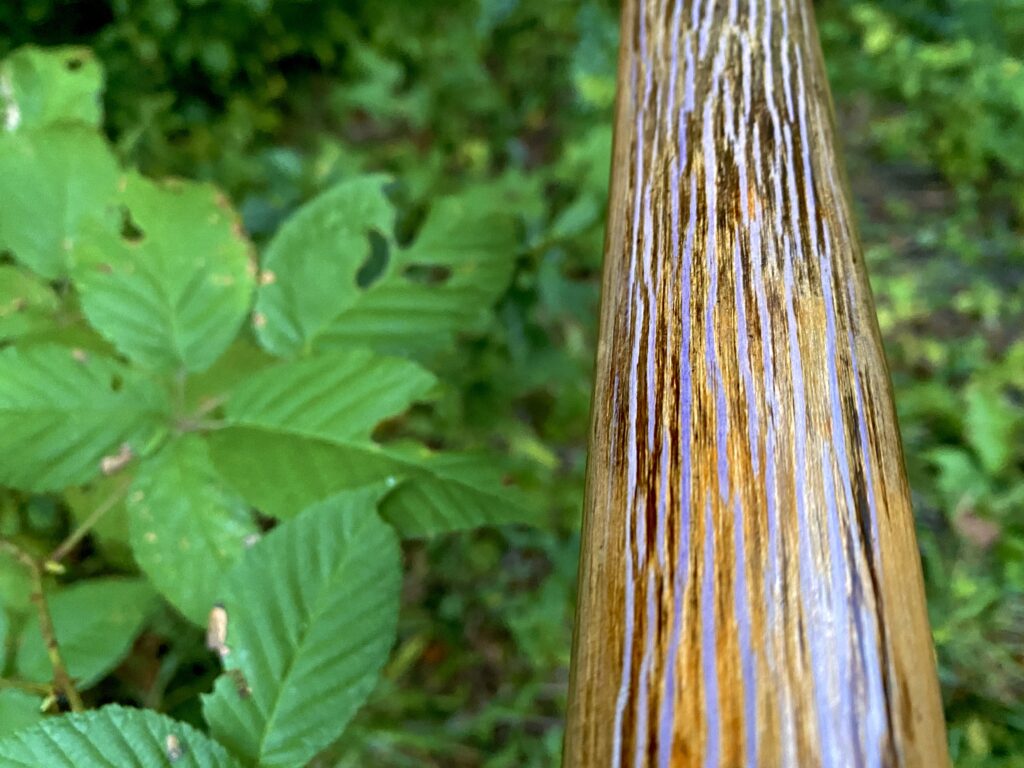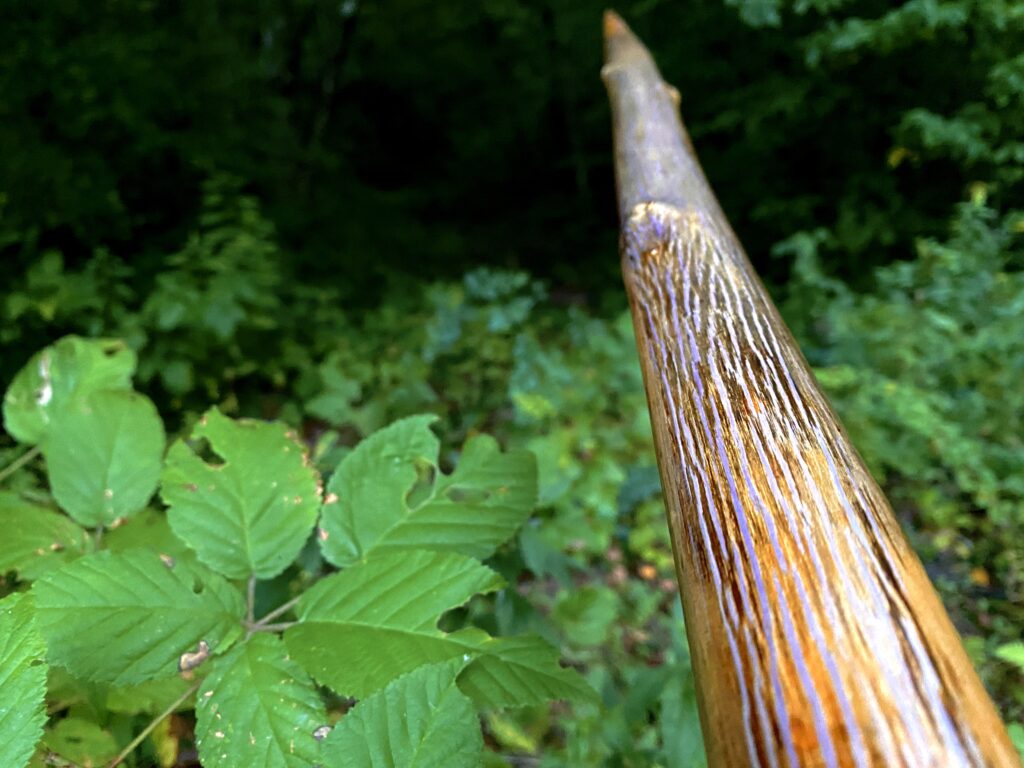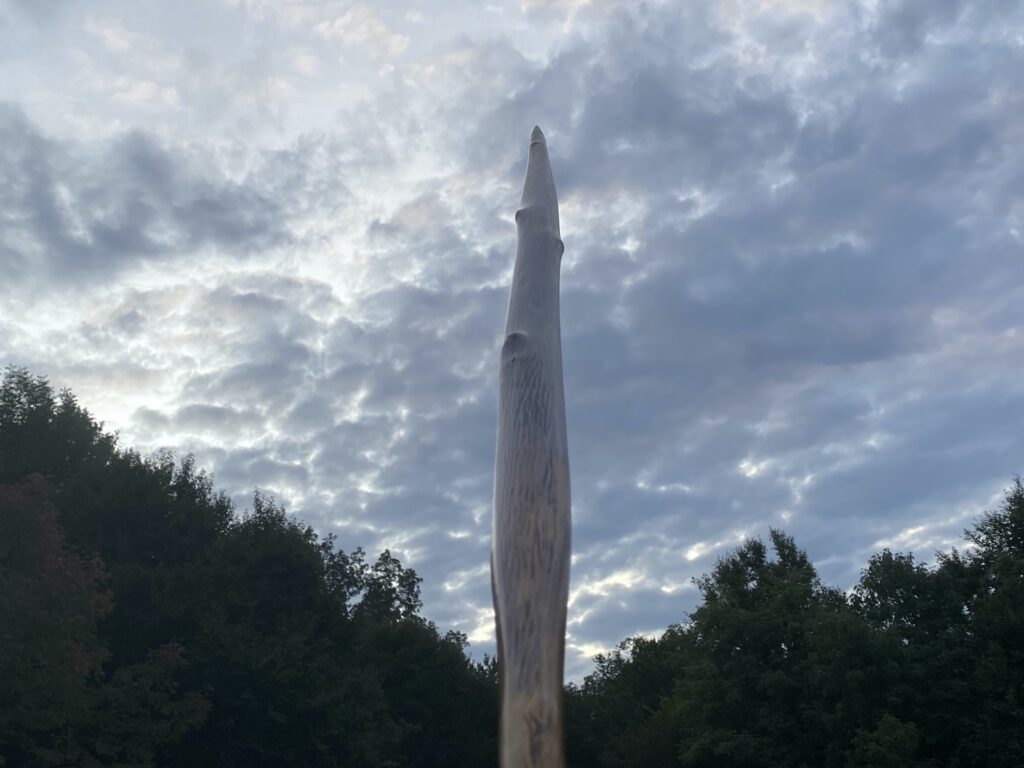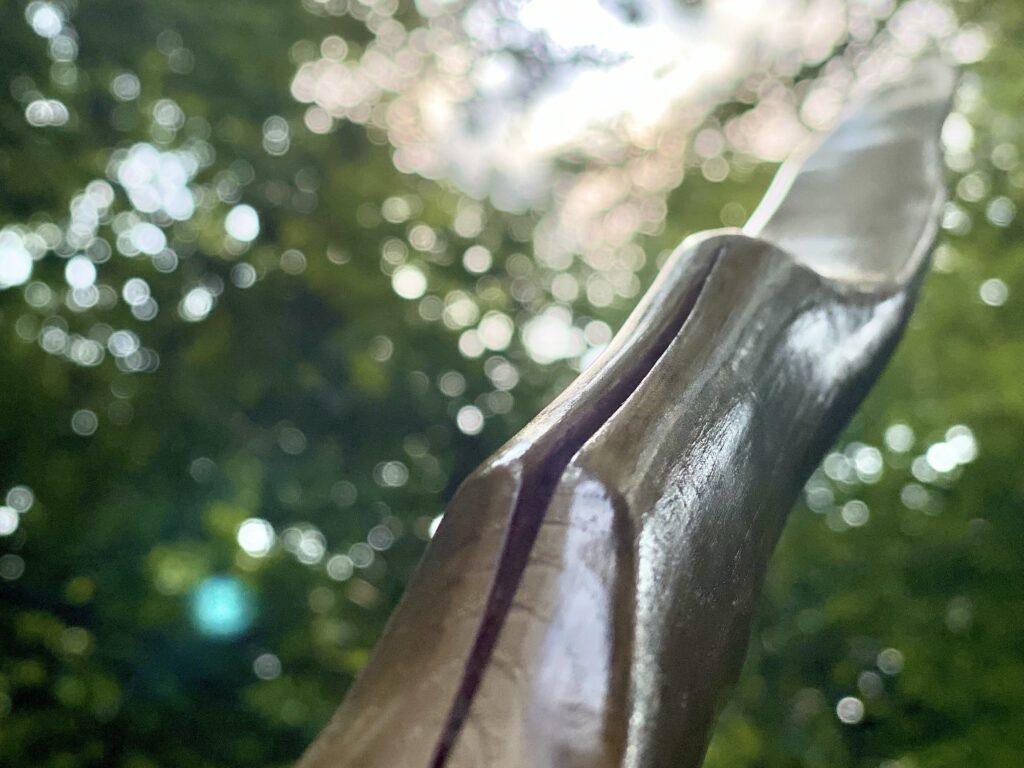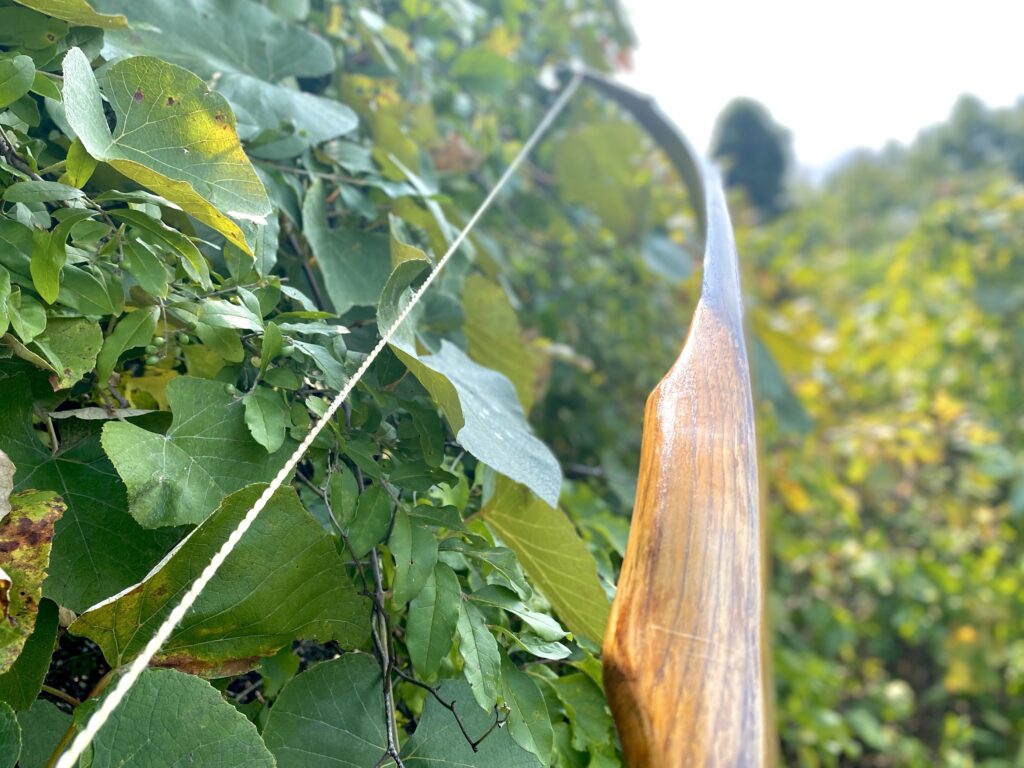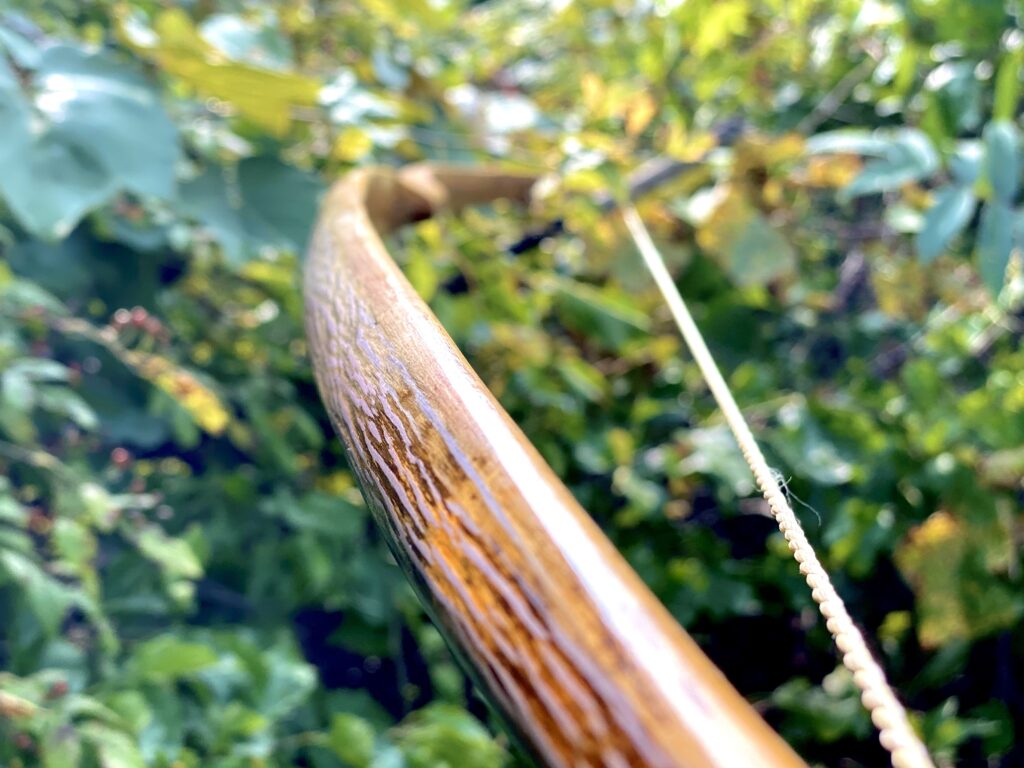Hickory sapling longbow colored with roots and flowers. 70# at 30″
74.5″ total length, 72.5″ ntn
Asymmetric layout with heavy positive tiller
Stained with bloodroot, charcoal, and blue cornflowers. There’s a big drying check in the handle, emphasized with pokeberry juice. This type of crack is common in sapling bows with thick handles, and does not weaken the bow in any way. I find them attractive and choose not to cover them under a handle. The finish is hand rubbed and based on an old violin varnish mix containing shellac, pine resin, and various drying oils. Because of the ridges and valleys along the back of this bow, the stain changes color depending on the viewing angle.
In the video below I explain my approach to staining directly with plant matter. If you use this method just make sure to choose colorfast stains, since most are fugitive and will fade with light exposure. When you test your colors, do this in advance so you can see which ones will last. Natural stains are controversial in the art community because many great paintings have been lost to the use of fugitive pigments. I don’t see this as an issue for bow making, because the bow will function with or without the stain. The problem can be worked around by choosing colors and textures that will look good as they age. As of one year, this bow is still vibrant as ever, but I can’t say that for all my naturally stained bows.
Most natural stains are not guaranteed to remain vibrant. If this is an important quality to you I can do my best to choose colorfast stains, but even they will lose some potency with the years. Despite the issues, I keep choosing natural stains because they give a certain freedom to choose bold color patters that would be overly eye catching with modern pigments. Natural stains tend to have a certain discretion to them and bold colors don’t stand out so much when you’re on the hunt.
